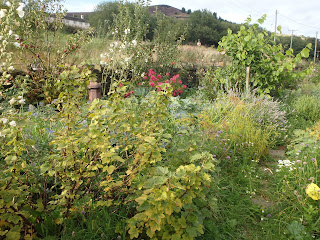In 2010 two anonymous donors gave a total of nine thousand pounds to the Permaculture Association to conduct a ten year research trial into forest gardens in the UK. The idea was to give half of the money to a dozen newly established forest garden to help cover their set up costs, and to use the remaining money to monitor their progress and evolution over the following ten years.
This report marks the half way point of that project. It reports on the progress of the forest gardens in the trial, and on what has been learned to date. Read it here.
This report marks the half way point of that project. It reports on the progress of the forest gardens in the trial, and on what has been learned to date. Read it here.




